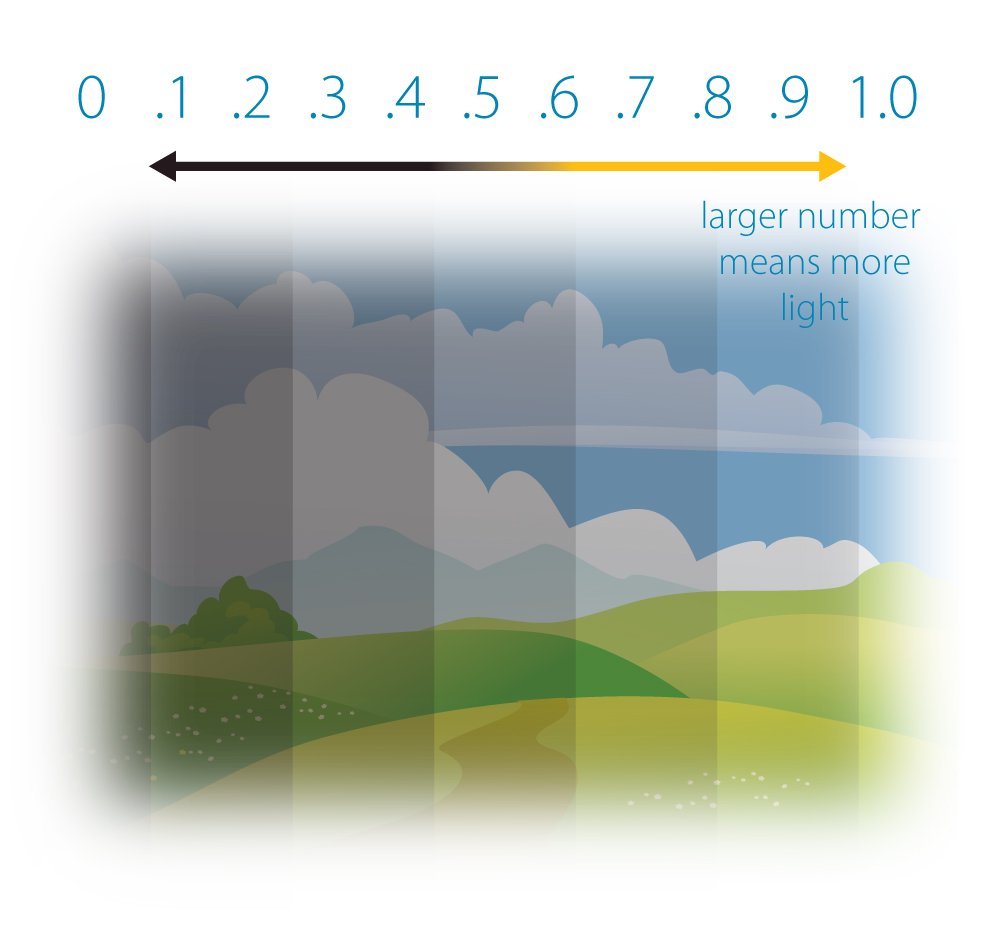What is Low-E and why does it matter?
Large-scale operable glass wall panels opening up the space to natural light
Low-E stands for low-emissivity and refers to a microscopically thin coating applied to glass panels in order to minimize the amount of infrared and ultraviolet light that comes through the glass. For reference, this coating is thinner than a single strand of human hair and is designed to still allow natural light to enter to the indoors.
This coating keeps the temperature on the interior of a building consistent by reflecting the interior temperatures back inside. This is helpful in all different climates and seasons as it works at reflecting winter heat back inside, while also deflecting summer heat outside.
There are several factors used to measure the effectiveness of glass with Low-E coatings:
Solar Heat Gain Coefficient (SHGC)
U-Value
Visible Light Transmittance (VLT)
Light to Solar Gain
Solar Heat Gain Coefficient (SHGC)
The solar heat gain coefficient is the fraction of incident solar radiation that actually enters a building through the entire window or door assembly and is subsequently released as heat inside a space. The lower the SHGC, the less solar heat it transmits and the greater its shading ability.
Depending on the climate you live in, building codes and personal thermal preferences a typical SHGC rating can range anywhere from 0.25-0.6. For efficient energy performance and lower A/C costs, a rating of 0.25 or less is optimal.
U-Value
The U-value is the measure of how much heat is transferred through the window or door. The lower the U-value the better the insulation properties of the glass– the better it is at keeping the heat or cold out.
This factor is a differentiator in product performance and overall thermal ratings. More often than not, this is a key component of achieving building codes and must be taken into consideration when comparing operable glass systems. There are different requirements depending on location and city, but most areas are becoming more stringent in this category as we move towards a more energy-efficient world.
This U-value is critical in saving money on heating and cooling expenses and we strongly recommend researching products that can provide you with high-performing glass.
Imperial Vs. Metric U Value Calculations
When comparing operable glass systems side by side, it is important to consider the unit of measurement in which the U-Value is being displayed. For example one system may list that their U Value performance is 0.35 whereas another system you are comparing lists a performance of 2.0. The 0.35 rating is displayed in imperial (Btu/ft^2-h-F) and must be multiplied by “5.678” to get the metric value of 1.99 (W/m^2-K).
Visible Light Transmittance (VLT)(Tvis)
Visible transmittance is the fraction of visible light that comes through the glass and can be weighted by the sensitivity of the human eye. Glass with a higher VLT transmits more visible light.
Examples:
VT .5 would be VLT 50% of the light is getting through
VT .98 would be VLT 98% of the light is getting through
Although maximizing natural light in a space is often a desirable outcome, especially in colder climates, there is often an undesirable heat gain. High-performance windows and doors with low-E coatings can reject the solar heat gain while allowing relatively high amounts of visible light to pass through the glass.
Light to Solar Gain
Light to Solar Gain is the ratio between the window's Solar Heat Gain Coefficient (SHGC) and its visible light transmittance (VLT) rating. LSG=Transmittance(VLT)/SHGC. A higher LSG ratio means sunlight entering the room is more efficient for daylighting, especially for summer conditions where more light is desired with less solar gain.
All of these factors are important to consider when comparing systems side-by-side while taking into consideration your required building codes. Our team is here to help and can help walk you through the technical aspects and any questions you may have. info@slideclear.com





